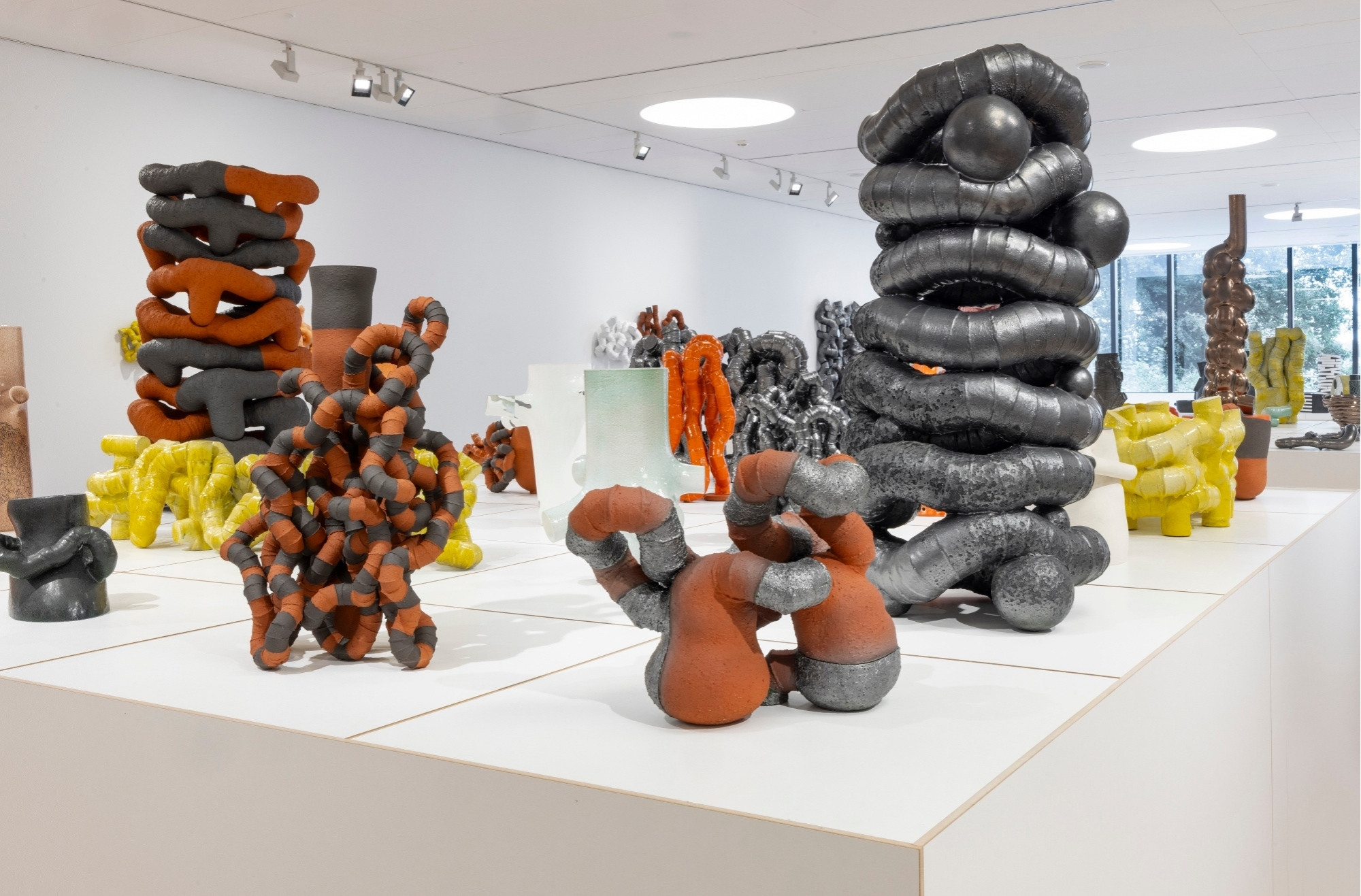By Christina Rauh Oxbøll
Throughout Autumn and Winter 2024/25, CLAY Museum of Ceramic Art Denmark presents ‘Martin Bodilsen Kaldahl: Cuts, Stripes, and Knots – A Ceramic Retrospective’. The exhibition offers a generous view of Kaldahl’s persistent exploration of the sculptural potential of ceramics over more than three decades, complemented by several new pieces made for the exhibition. These recent works demonstrate that the artist’s passion for clay and urge to explore new possibilities of form remain as vital as ever.
CLAY’s connection with Martin Bodilsen Kaldahl dates back to the founding of the museum in 1994. That year, Kaldahl created his monumental sculpture group of three anthropomorphic vessels at Tommerup Ceramic Work Centre in central Funen. After showings in Copenhagen (at the Charlottenborg Autumn Exhibition in 1994 and, later that year, in the lobby of Denmark’s National Bank) and in Saint Petersburg, Russia, the sculpture group returned to the island of Funen, where it was installed in the CLAY Museum Park. Here, against the backdrop of the old, protected oak trees and the maritime traffic through the Little Belt, the more than two-meter-tall and vaguely humanoid ceramic vessels have stood in quiet conversation ever since, unperturbed by the changing weather and the passage of time.
Kaldahl’s personal expression is characterized by the continuous experimental investigation of clay’s artistic and technical possibilities. Aided by exquisite craftsmanship and mastery of the material, he has a formidable ability to immerse himself in an intensive process in which the objects emerge in a dialogue between artist, technique, and material. In this process, his dual background as an artisan and artist is evident.
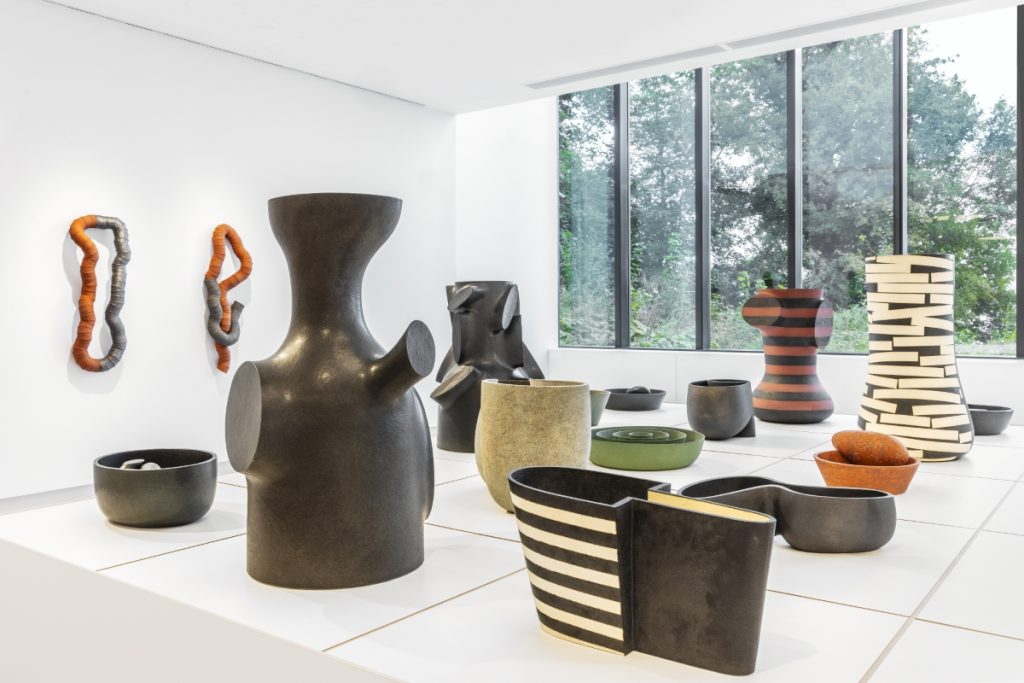
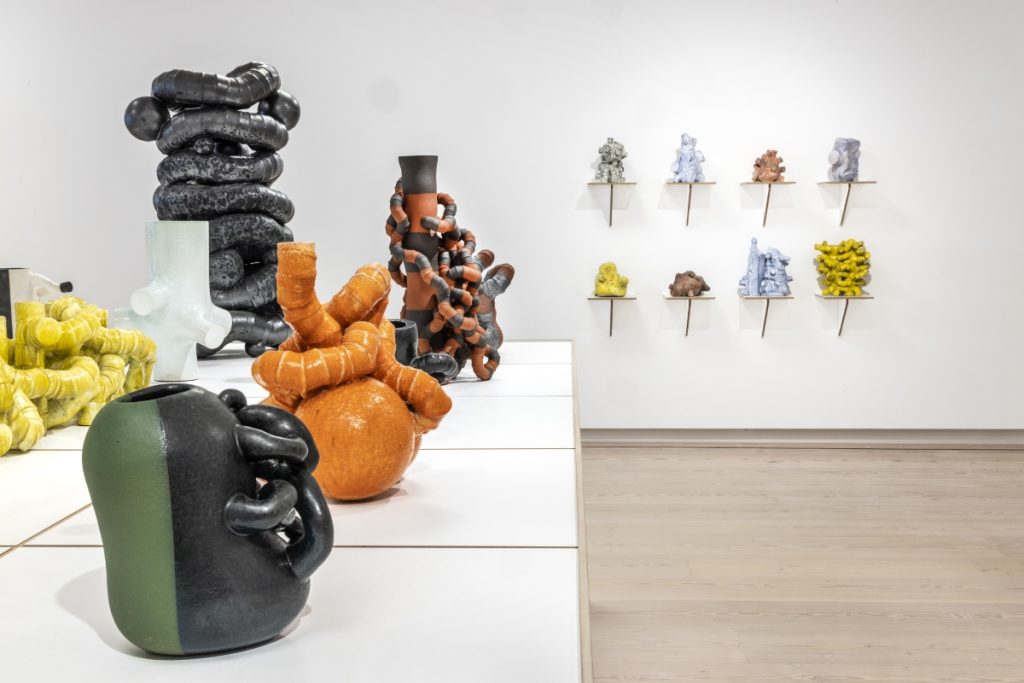
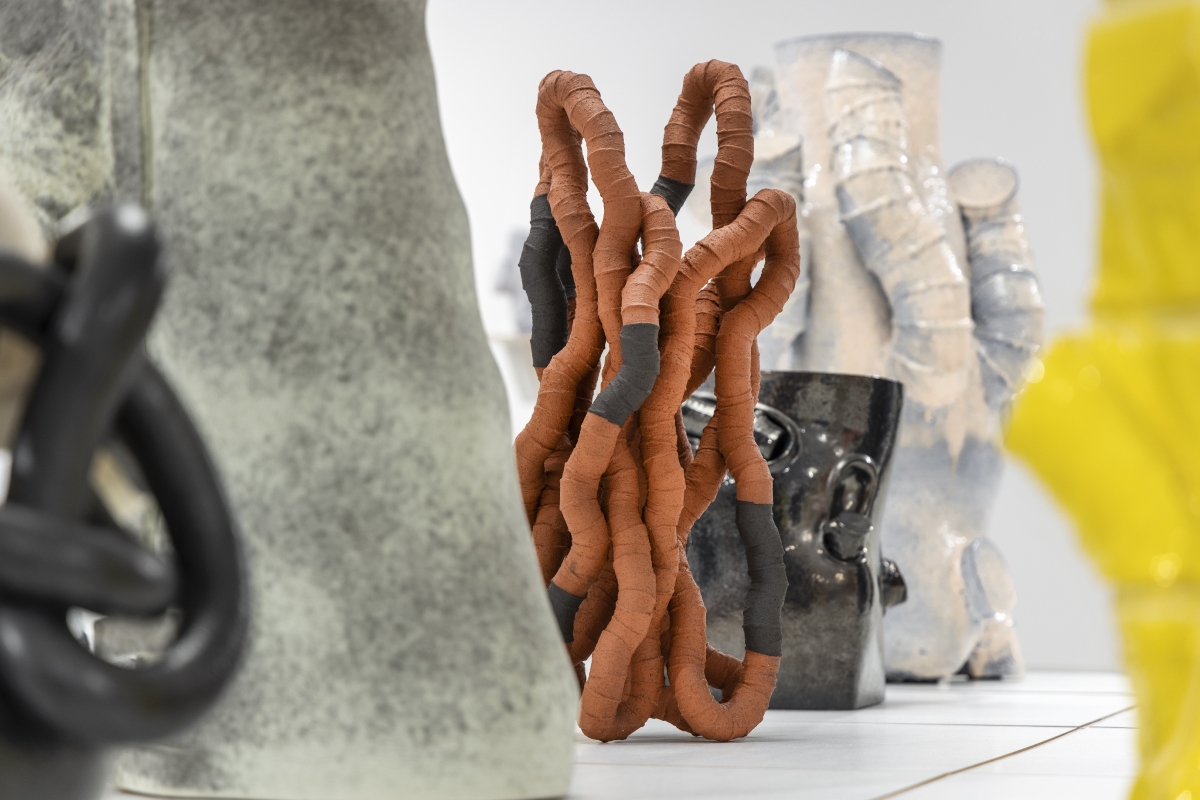
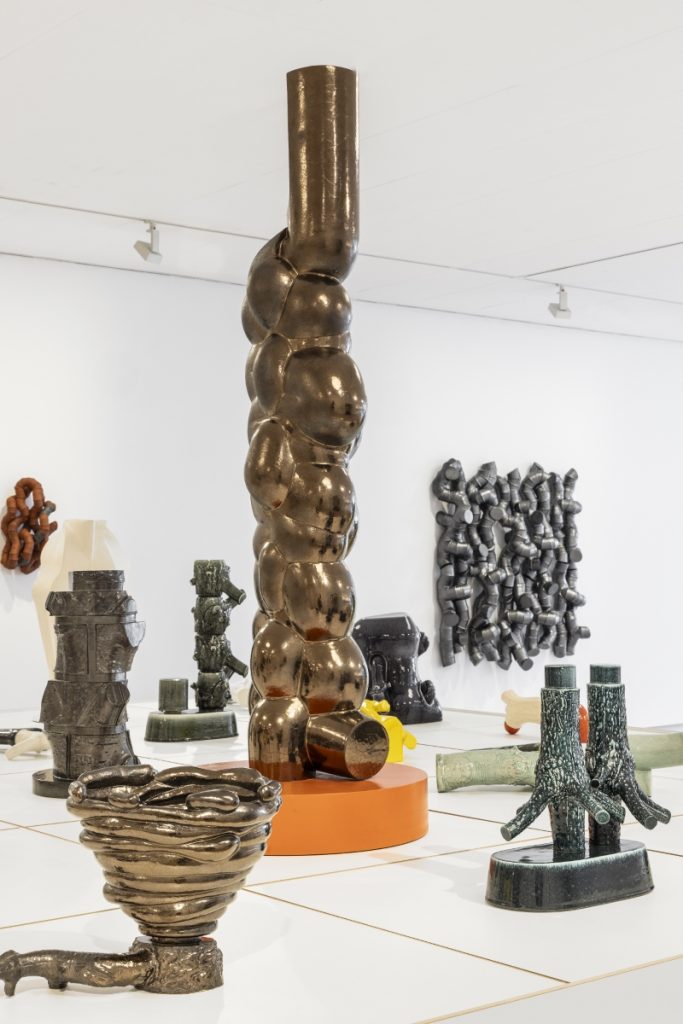
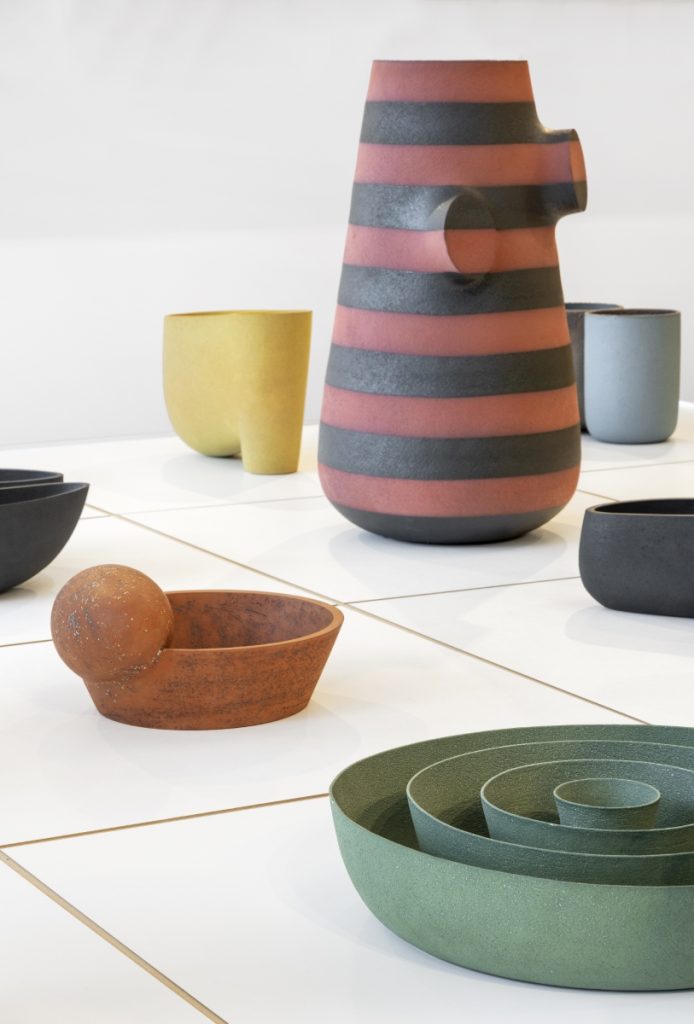
Martin Bodilsen Kaldahl (b.1954) graduated with a master’s from the Royal College of Art (RCA) in London in 1990. Before this, he crafted pottery in his own studio in Jutland. Unsatisfied with the never-ending fabrication of utensils for everyday use, he looked for new inspiration. The years at RCA became a catalyst for the evolution of his work as he now moved to explore the possibilities of sculptural expression. It was natural for him still to focus on the pot since it had played an important role in his work life.
Kaldahl is, above all, a formalist. With the title of the exhibition ‘Cuts, Stripes and Knots’, he describes some of the key visual tools he has used in the investigation of form throughout the years. A field trip to Africa studying clay architecture brought him on the track of pulling and shaping his vessels expressively to the extent that they would almost lose balance and tip over. In the early nineties, the basic forms of his works were still based on the idea of the vessel – the archetype of ceramics – and he started to explore it formally and sculpturally. Here, the idea of the object as a body in space and how it affects us physically became a pivotal point in his career. Inspired by how we perceive the vessel and relate it to functionality, he experimented with disturbing the form by adding outgrowths, elliptical shapes, and bold graphical decoration to blur the shape. By adding a cut, a shape could be changed radically. Or he could let the ornament become a wild, growing three-dimensional knot that took over the pot completely. Around the turn of the Millennium, the vessel disappeared completely. What remained was pure sculpture.
Based on an idea he investigates and tests in analogue or digital drawings, Kaldahl shapes the clay into three-dimensional form. Also, 3D-printed elements appear in some of the sculptures from around 2000. This shows that Kaldahl gladly experiments with new technologies and explores how they can challenge the understanding of form and enrich the designs of his sculptures.
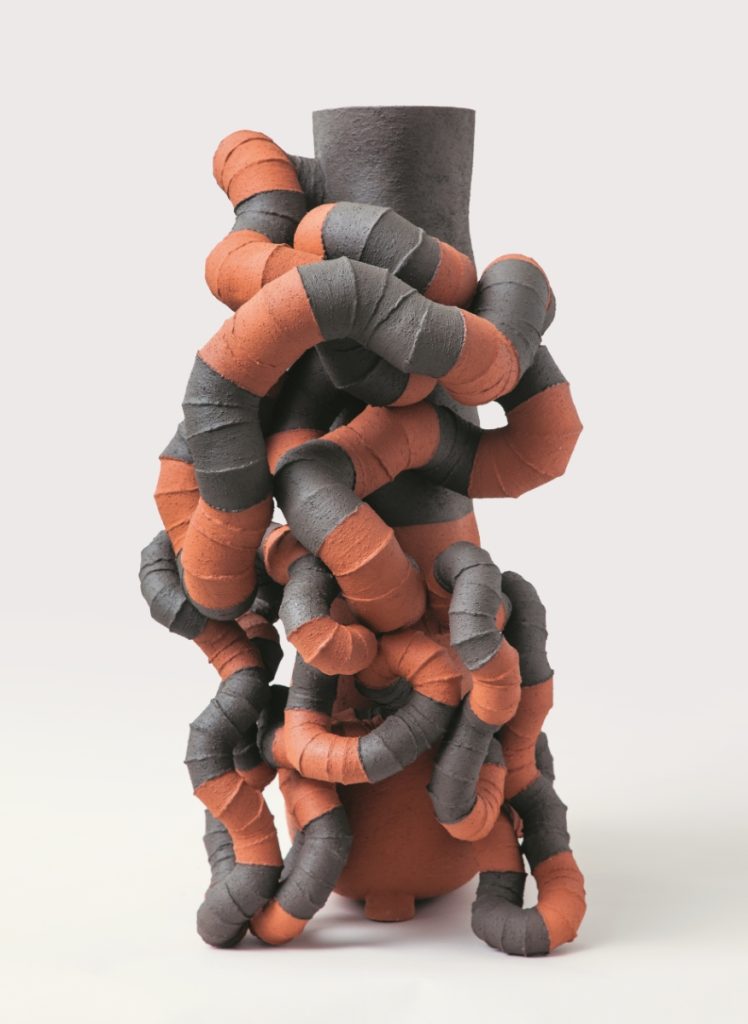
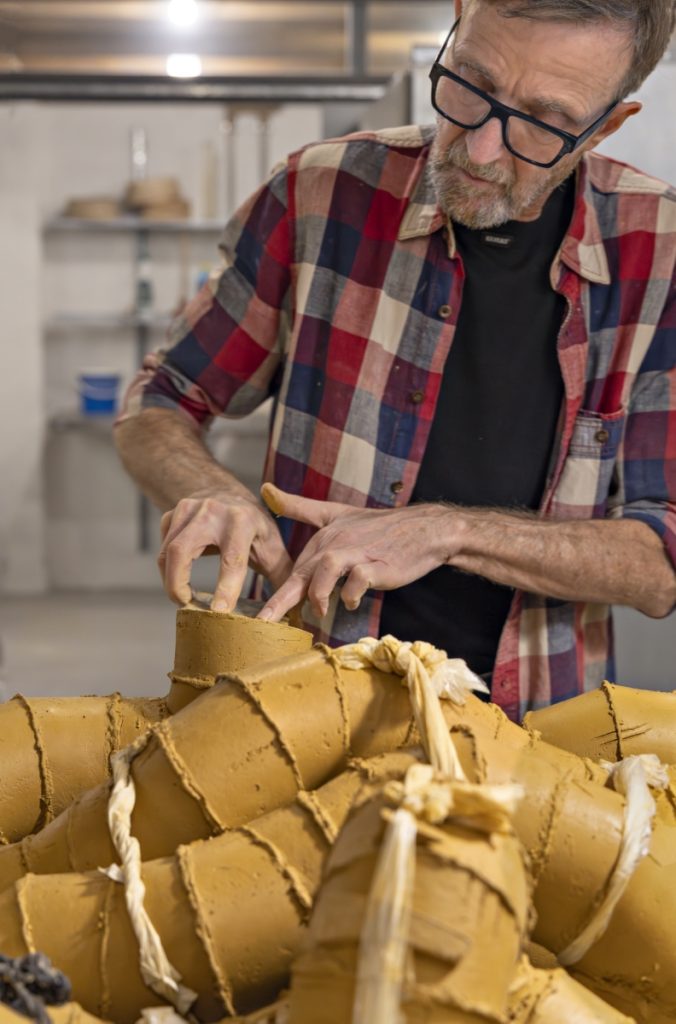
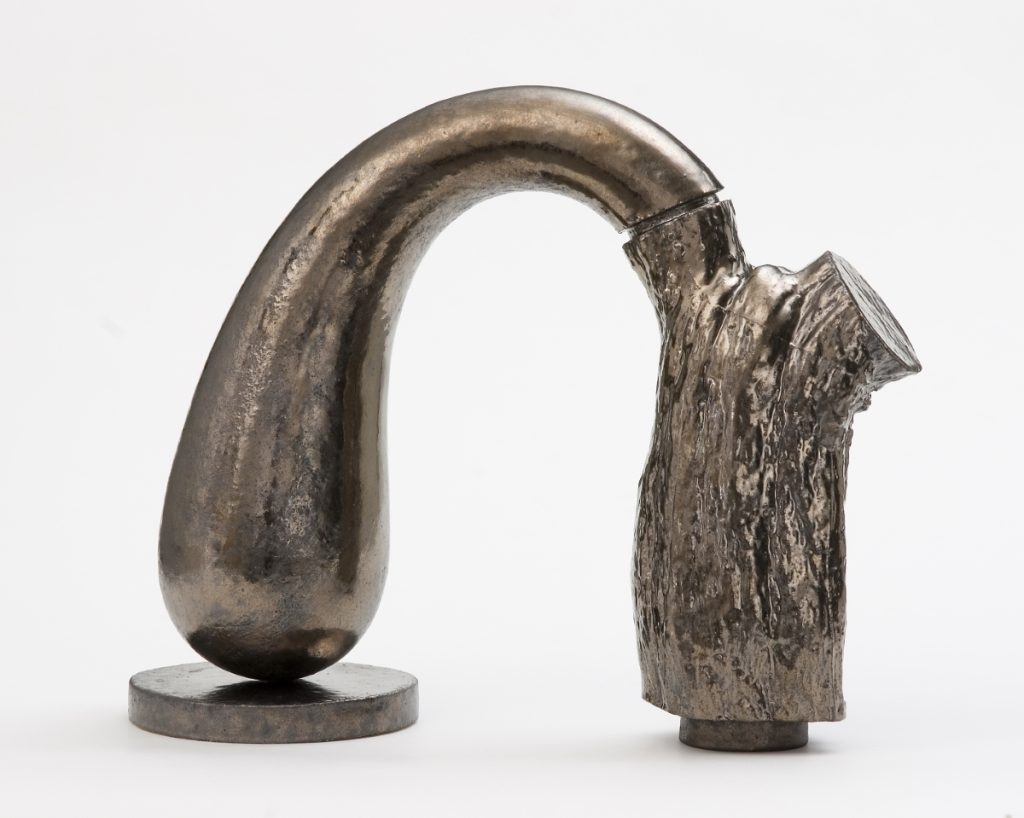
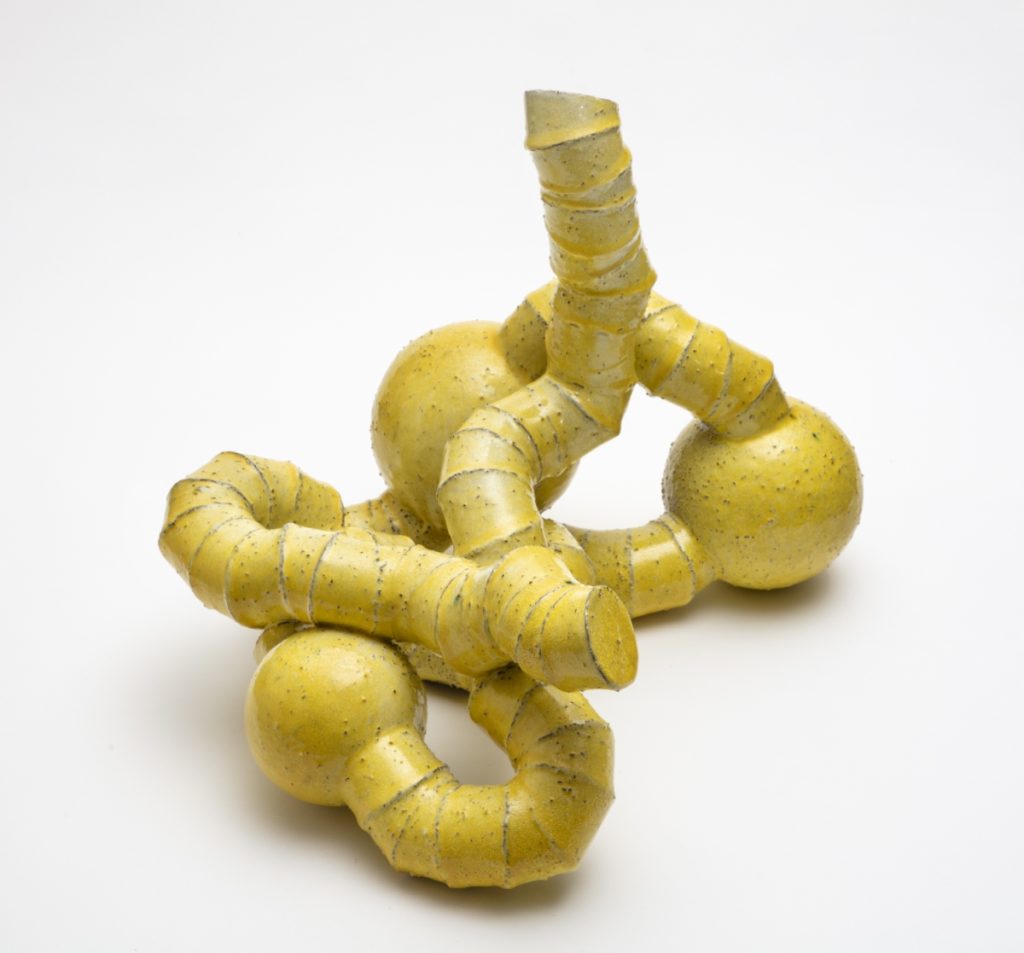
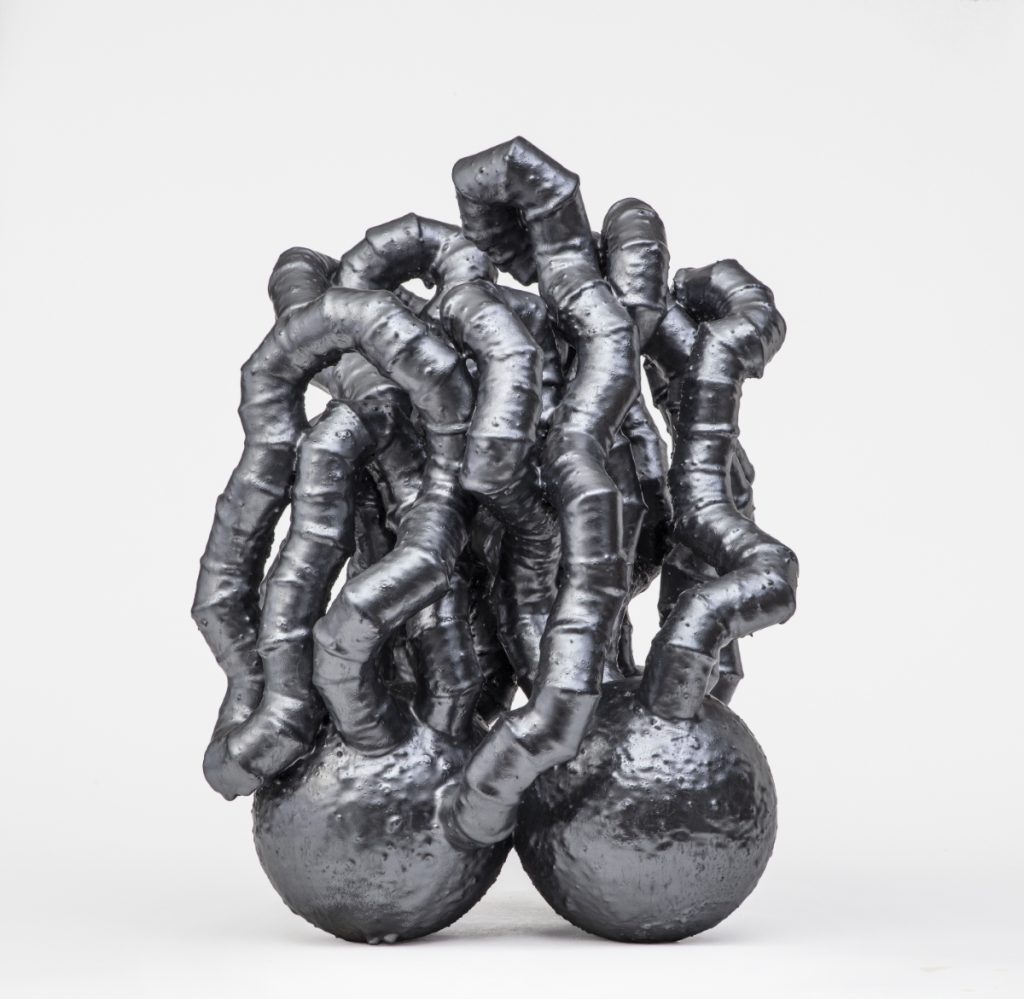
Often surprising and sensuous, the objects manifest themselves through impactful graphic effects, vibrant colors, and a profound grasp of form in a playful engagement with both simple and complex constructions. They have a strong presence and an inner energy that often provoke physical reactions in the viewer that might be both repellent and curiously appealing. Kaldahl’s works invite a wealth of possible interpretations in a vibrant combination of abstraction and suggestions of both natural and cultural phenomena—but always with the underlying understanding of form as the core feature, regardless of scale.
With impressive vigor, Kaldahl has developed a unique sculptural expression by restlessly and consistently flouting acquired skills, challenging himself, and generating new possibilities in clay. Today, his works are in high demand by international art collectors and are found in esteemed museum collections in Denmark and abroad.
Concurrently with his own artistic practice, Kaldahl has proven himself an exceptionally accomplished curator and organizer. He was one of the driving forces behind the exhibition platform Copenhagen Ceramics, which he initiated in 2011 together with fellow ceramic artists Steen Ipsen and Bente Skjøttgaard. Over three years, the group launched twenty-seven exhibitions of works by ceramic artists from Denmark and abroad in its own gallery in Copenhagen and Paris. In 2019, Copenhagen Ceramics orchestrated a major manifestation at CLAY Museum of Ceramic Art Denmark: the exhibition ‘Ceramic Momentum: Staging the Object’, which was an exciting international encounter of 23 ceramic artists from Denmark, the United States, Japan, Norway, and Sweden/Chile.
In parallel with his artistic practice, Kaldahl has demonstrated his didactic abilities during his many years as a lecturer in the Royal Danish Academy’s design programmes in Copenhagen and Bornholm. With his profound knowledge of ceramic processes, keen grasp of design and powerful sculptural expression, Kaldahl has thus shaped several generations of talented ceramic artists and makers. He was also one of the initiators of the Royal Danish Academy’s SuperFormLab, an advanced interdisciplinary workshop for 3D modeling focusing on experiments in materials such as ceramic, plaster, concrete, and glass.
Thus, Kaldahl is a highly accomplished and multi-faceted artist who is finally given space to fully focus on his artistic practice and progress since 1990 with this exhibition. The exhibition at CLAY lets Kaldahl express himself as both a curator and an artist. His personal selection of works and his strict exhibition design frame the presentation, in which works from different periods appear side by side, highlighting each other and pointing to possible connections and contrasts.
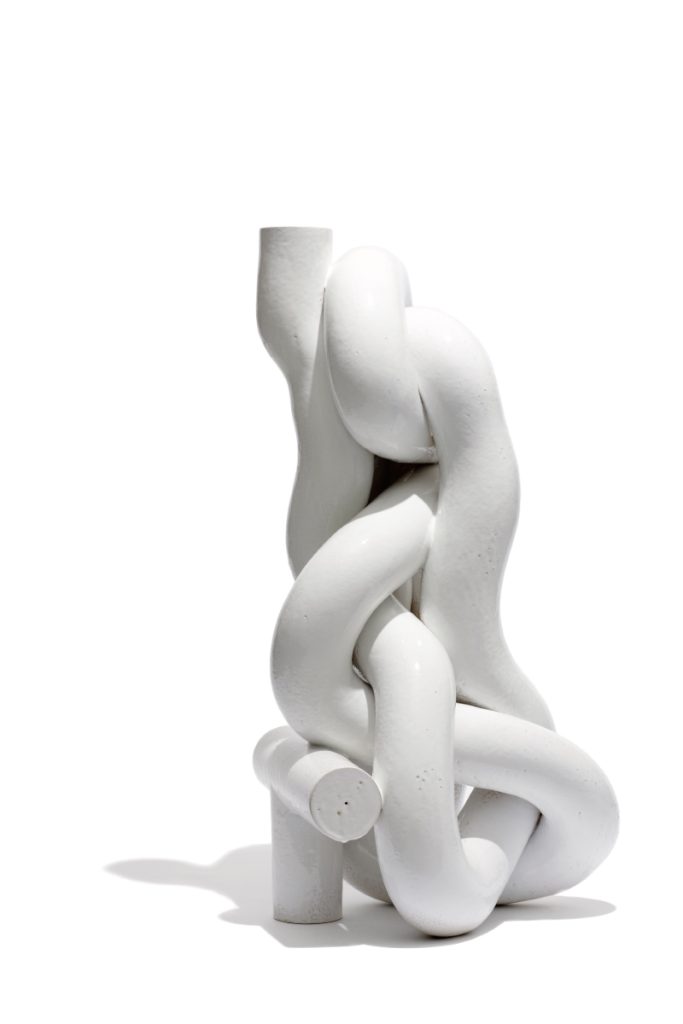
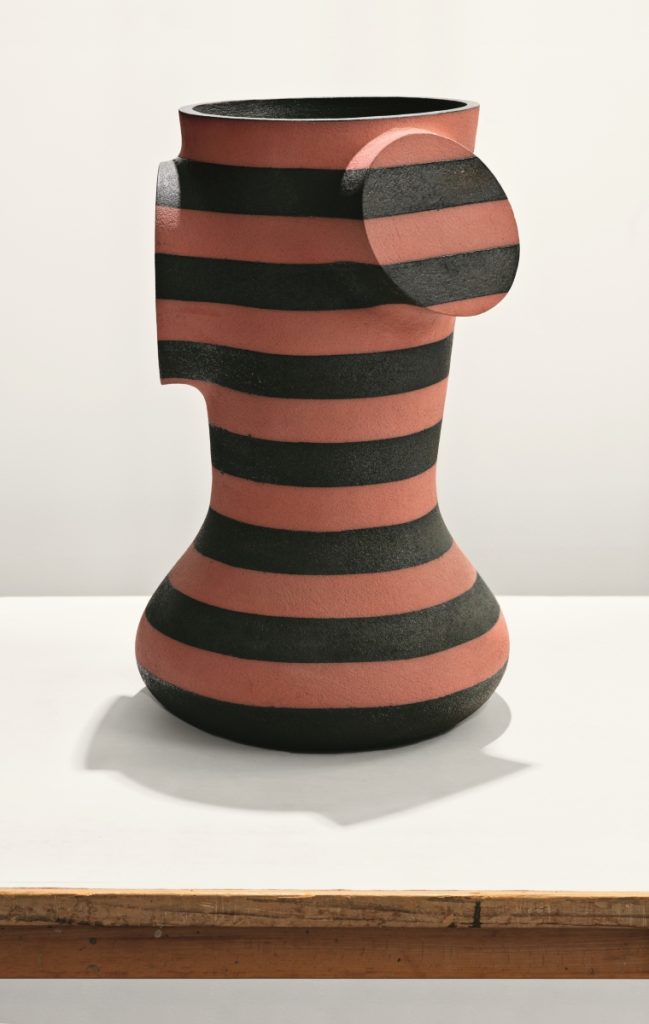
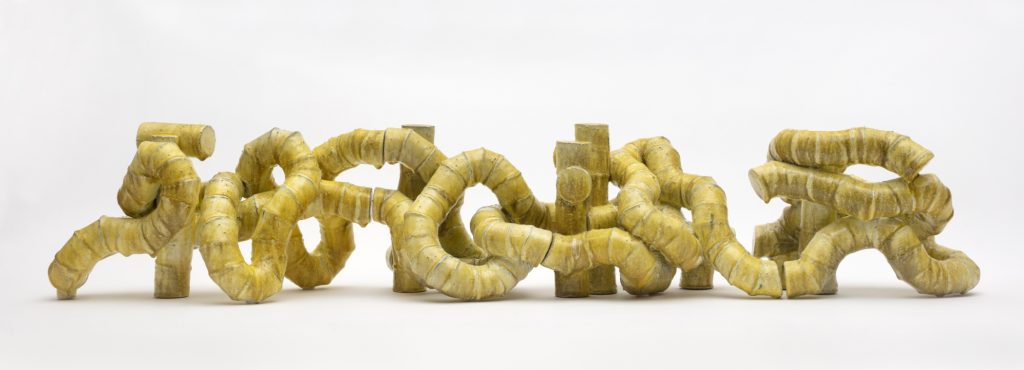
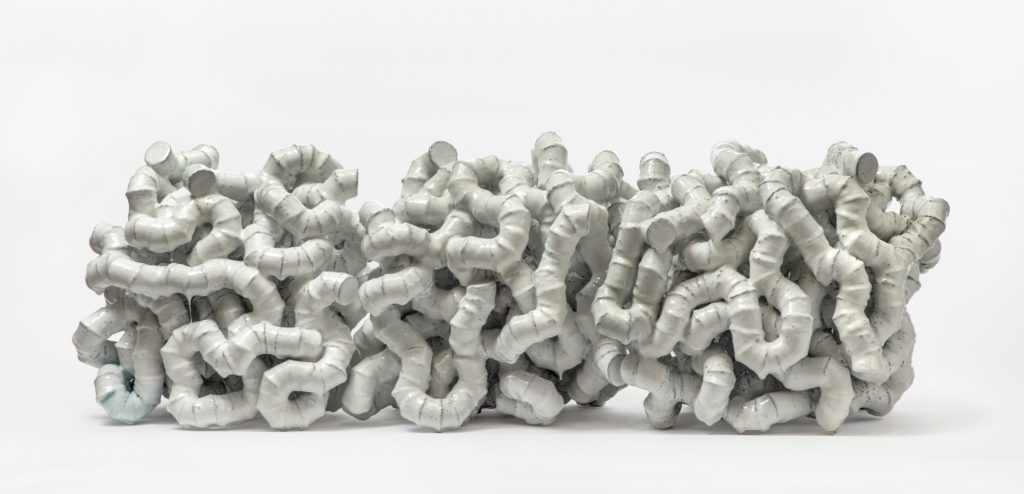
Kaldahl has published the comprehensive book “Probing the Floor, Sniffing the Air” alongside the exhibition. The main emphasis of the American design historian and curator Glenn Adamson’s essay, “An even newer Laocoön”, is on Kaldahl’s practice after 2012, in which he constructs objects from extruded tube sections in a randomized process. In “Anatomy of the knot and other studies of form”, the Norwegian art historian Jorunn Veiteberg invites the reader on a tour of Kaldahl’s journey of artistic development over the past 30 years, exemplified by selected pieces and periods. The two essays are accompanied by a torrent of beautiful photos that spark wonder and fascination with the ever-changing vitality and diversity of Kaldahl’s work. A unique artistic microcosm that connects anonymous and automated vocabulary of form with individual, bodily experience. An artistic universe that enters the topical debate about what it means to be human in the modern digital age.
Christina Rauh Oxbøll, who holds an MA in Art History, is a curator at CLAY Museum of Ceramic Art Denmark.
Martin Bodilsen Kaldahl: Cuts, Stripes, and Knots – A Ceramic Retrospective is on view at CLAY Museum of Ceramic Art Denmark, Middelfart, between September 8, 2024 and March 16, 2025.
Subscribe to Ceramics Now to read similar articles, essays, reviews and critical reflections on contemporary ceramics. Subscriptions help us feature a wider range of voices, perspectives, and expertise in the ceramics community.
Captions
- Installation views. Martin Bodilsen Kaldahl: Cuts, Stripes and Knots – a Ceramic Retrospective. CLAY Museum of Ceramic Art Denmark, 2024. Photos: Ole Akhøj
- Spatial Drawing #13, 2015, earthenware, 65x36x19 cm. Photo: Ole Akhøj
- Martin Bodilsen Kaldahl at The Danish Art Workshops (SVFK), 2023. Photo: Dorte Krogh
- Blobjection #1, Branchobject, 2007, earthenware, 27x32x12 cm. Photo: Ole Akhøj
- All for Right Now 1, Spatial Drawing #50, 2020, earthenware, 40x50x40 cm. Photo: Ole Akhøj
- All for Right Now 3, Spatial Drawing #52, 2020, earthenware, 46x43x41 cm. Photo: Ole Akhøj
- King of Knots / Knot #1, 2012, earthenware, 106x43x51 cm. Photo: Jeppe Gudmundsen Holmgren
- Other Planes #5, 2002, stoneware, 74x44x39 cm. Photo: Dorte Krogh
- Spatial Drawing #29, 2018, 32x138x34 cm, earthenware. Photo: Ole Akhøj
- White Accumulation, Spatial Drawing #63, 2020, earthenware, Three-part sculpture, 37x109x41 cm. Photo: Ole Akhøj


